SEO for D2C Brands: How to Drive Organic Traffic and Sales
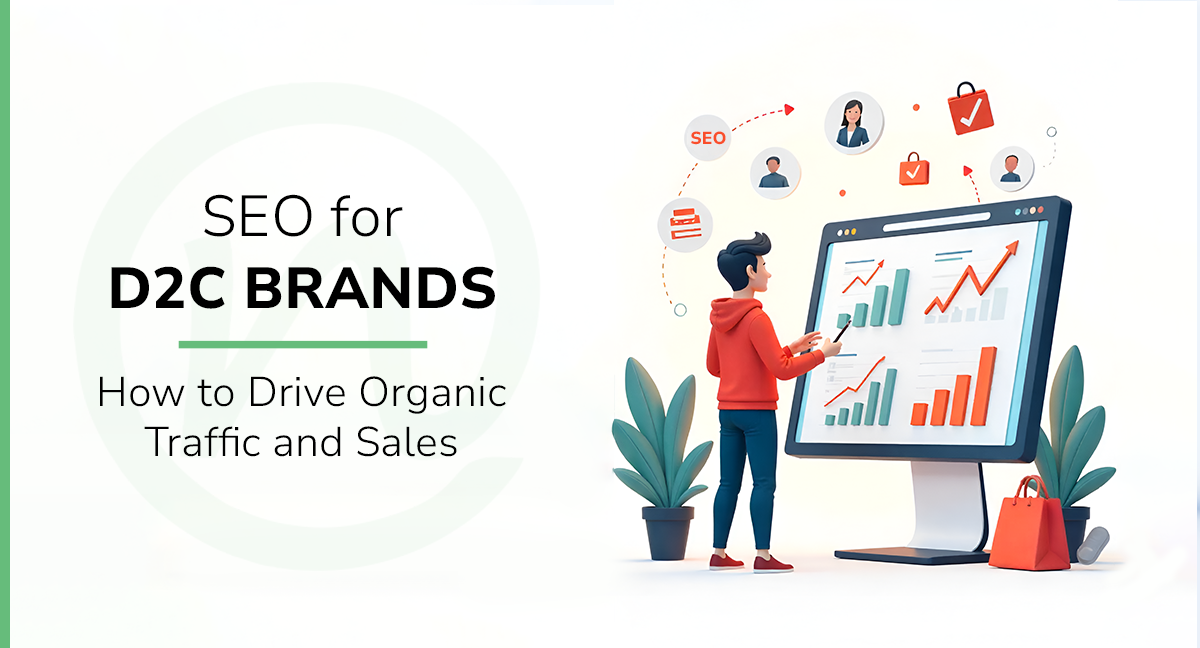
9th April 2025 / in SEO / by Ruturaj Kohok
- Reading time: 6 mins 43 Sec
We’ve all seen the incredible rise of direct-to-consumer brands over the past few years – and guess what?
For brands jumping into D2C marketing, there’s a golden opportunity to capture market share and drive sustainable growth.
Check this out:

Source: Inc42
The D2C business model is projected to generate a staggering $100 billion opportunity by 2025, growing at 25% between 2020 and 2025.
Talk about MASSIVE potential!
But here’s the thing – success isn’t guaranteed in this space.
Some D2C businesses are absolutely crushing it – like the beauty care brand that saw 60% organic revenue growth and a 90% increase in organic traffic.
Meanwhile, others are struggling to stand out in what’s becoming an increasingly crowded marketplace.
So what makes the difference? A solid SEO strategy!
Check this out: businesses make $2 for every $1 spent on digital advertising, and ad clickers are 50% more likely to convert than organic visitors.
Whether you’re launching a new D2C business or looking to scale your existing direct-to-consumer marketing efforts, mastering SEO is absolutely essential for driving sustainable organic traffic and sales.
In this guide, we’ll show you proven strategies to optimise your D2C website for search engines, attract qualified traffic, and turn those visitors into paying customers.
Let’s begin!
What is D2C SEO and Why It Matters for Your Brand
We understand that diving into D2C SEO can seem overwhelming at first.
So let’s start with the basics – what exactly is it?
Direct-to-consumer (D2C) SEO refers to the specialised search engine optimisation practices that brands use to rank higher in search results when selling products directly to end consumers through their own websites, without intermediaries.
And here’s the kicker – for D2C brands, SEO isn’t just another marketing channel—it’s one of the top two most important acquisition channels and the leading organic one.
Challenges of D2C businesses
The space is becoming increasingly crowded, making it difficult to stand out among competitors.
Customer acquisition costs can be HIGHLY expensive, especially for newer brands with limited resources.
D2C operations also demand significant investment in technology infrastructure, including e-commerce platforms, payment systems, and analytics capabilities.
Managing shipping, fulfillment, and maintaining a consistent brand experience across all touchpoints requires careful planning and execution is another hurdle.
How SEO drives direct customer relationships
SEO empowers D2C marketing by building direct relationships with consumers throughout their journey.
By categorising keywords according to the four stages of the customer journey, you can design your SEO strategy to increase brand awareness and conversion.
Did you know that SEO helps foster trust – a critical component for D2C brands?
When your site appears in search results, it signals credibility to potential customers.
As Google rewards websites that offer better relational qualities, your page experience (website speed, usability) directly affects rankings.
Additionally, SEO data provides valuable feedback about customer preferences.
By analysing search behavior, you gain insights into what customers think and feel, allowing you to respond proactively and improve your offerings.
This is exactly how you build lasting relationships with your audience through D2C marketing tactics!
To further enhance your D2C strategy, explore how AI and personalisation are revolutionising direct-to-consumer success in this blog post
Key differences between D2C and traditional eCommerce SEO
D2C SEO differs fundamentally from traditional eCommerce approaches.
While traditional eCommerce SEO is more content-driven, D2C SEO focuses heavily on products and categories.
Also, the KPIs for D2C websites center primarily around revenue, with search visibility and organic traffic serving as secondary metrics.
Want to know what makes D2C SEO unique? It requires:
- Frequent monitoring of SKU pricing
- Tracking average order values
- Checking inventory availability
- Nodal analysis of consumer journeys
Understanding sale periods and seasonality is particularly critical – pre-planning for these periods can help maximise output during times when traffic, sales, and revenue typically increase.
For any D2C business, SEO serves as a cost-effective alternative to rising paid advertising costs.
As expenses for PPC and social media marketing continue to climb, a robust SEO strategy can attract thousands of interested visitors monthly while positioning your brand for solid long-term return on investment.
We’re talking about sustainable growth here!
Building a Strong Technical Foundation for D2C SEO
Technical excellence isn’t just a nice-to-have – it forms the backbone of any successful D2C SEO strategy.
Without a solid foundation, even the most creative content and marketing efforts will struggle to gain traction.
Let’s explore the key technical elements that drive organic success for direct-to-consumer brands!
Site structure optimisation for D2C websites
Have you ever visited a website and felt completely lost? That’s exactly what we want to avoid!
A well-structured D2C website helps both users and search engines navigate your content efficiently.
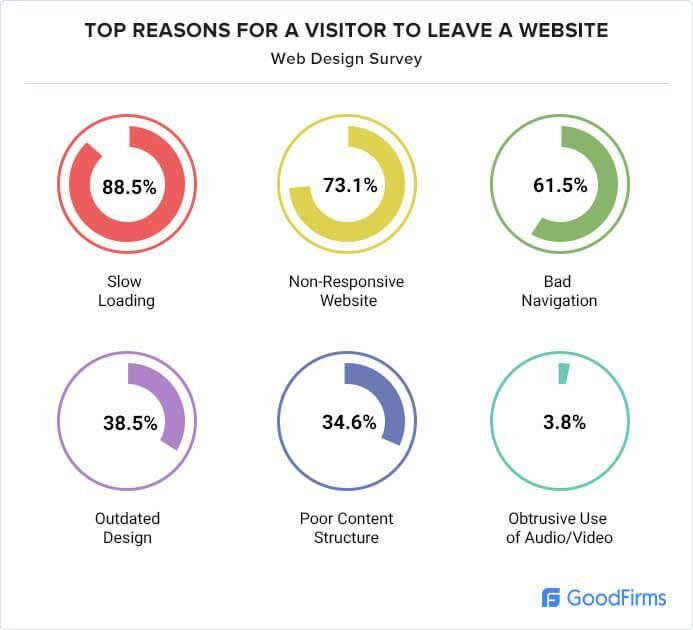
Source: GoodFirms
As you can see, there are many reasons why a user might leave your website – all of which relate back to having a good website architecture.
Here’s what you need to implement:
- A clear hierarchical structure with your homepage as the central hub, followed by category pages, subcategories, and finally product pages
- This organisation ensures no page is more than three clicks away from the homepage, significantly improving both user experience and D2C e-commerce SEO performance
For D2C brands specifically, your URL structure should directly reflect this hierarchy.
And don’t forget about breadcrumb navigation!
Adding these little pathways creates additional internal links, helping search engines understand your site structure while making it easier for users to navigate backwards. Win-win!
Mobile-first indexing for D2C brands
We all know how much we use our phones for shopping – and Google knows it too!
Since Google now uses the mobile version of your site for indexing and ranking, mobile optimisation is no longer optional for D2C brands.
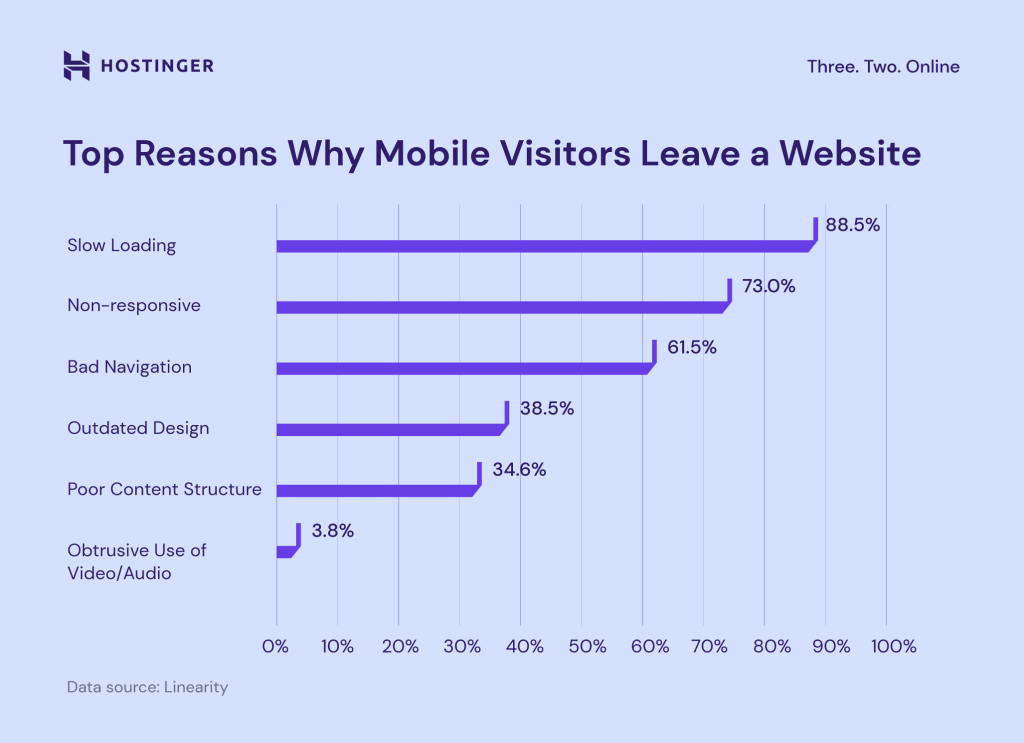
Source: Hostinger
Optimising your website for mobile users is an up-and-coming D2C marketing strategy because 88.5% of users leave a website because of its slow loading speed, 73% leave because it’s non-responsive, followed by 61.5% because of bad navigation.
So, what does this mean for you? Every aspect of your site must perform flawlessly on mobile devices for all D2C marketing channels.
To get this right:
- Implement a responsive design to ensure your site adapts to all screen sizes while maintaining the same HTML across devices
- Verify that all content—including text, images, and videos—is accessible on mobile, as only content visible on your mobile site will be indexed
Page speed optimization techniques
Did you know that site speed directly impacts both user experience AND SEO rankings?
Check this out:
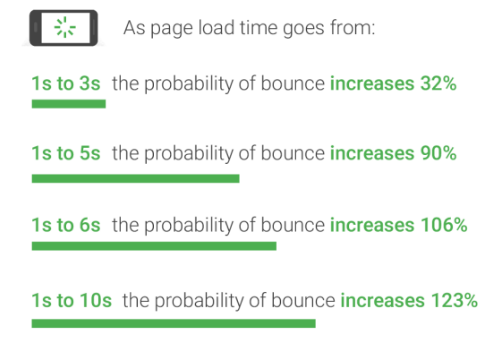
Source: Tech Numero
Research suggests that bounce rates increase by 32% when page load time increases from 1 to 3 seconds, and go up to 123% when the loading time goes to 10 seconds.
That’s a HUGE difference!
To improve your site speed:
- Optimise images through compression and proper sizing
- Enable GZIP compression to reduce file sizes
- Implement browser caching for returning visitors
- Utilise a CDN to deliver content from servers closest to users
We understand how overwhelming technical SEO can feel, but these D2C marketing tactics are absolutely worth your time and effort.
Schema markup for D2C products
Want your products to stand out in search results? That’s where schema markup comes in!
Product schema markup provides search engines with detailed information about your offerings, enabling rich results in search listings.
For D2C businesses, implementing product schema can display critical information like price, availability, ratings, and reviews directly in search results.
To implement an effective product schema, you must include the “name” property along with either “review,” “aggregateRating,” or “offers”.
This structured data helps search engines better understand your products and match them with relevant search queries.
Ps. This is one technical element you definitely don’t want to skip – it can make your listings pop in search results and drive significantly more clicks!
Keyword Research and Content Strategy for D2C Brands
Ever wondered what makes some D2C brands stand out while others fade into the background? It often comes down to keyword research!
Effective keyword research serves as the compass for D2C brands navigating the competitive digital landscape.
Unlike traditional retailers, direct-to-consumer marketing needs a tailored approach to content that directly connects with consumers while maintaining visibility in search results.
Find high-intent keywords for your product categories
What exactly are high-intent keywords? They’re specific search terms that signal a user’s readiness to make a purchase or take action.
These powerful phrases can significantly improve your conversion rates, as they target users who have moved beyond browsing and are prepared to buy.
For D2C brands, identifying these keywords is crucial for connecting with customers at the pivotal moment in their buying journey.
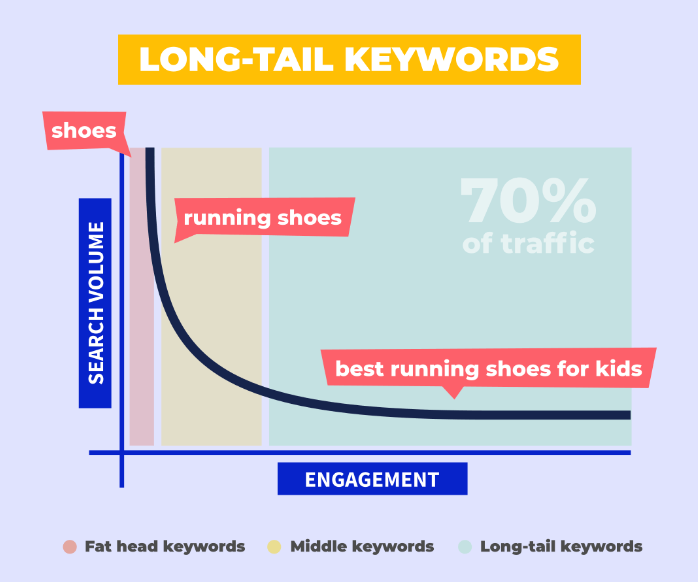
Source: Mangools
Did you know that long-tail keywords typically show stronger intent and often yield higher conversion rates – 70% of users search for long-tail keywords!
To discover these valuable keywords for your D2C business:
- Look for action-oriented modifiers like “buy,” “order,” “purchase,” “discount,” and “coupon”
- Include specific product names, model numbers, or branded terms
- Target question-based queries (e.g., “where to buy biotin”)
- Initially, examine what makes your customers choose your brand over competitors.
Subsequently, use tools like Google’s Keyword Planner to identify related terms with high commercial intent and strong cost-per-click (CPC) indicators.
Create content that supports the customer journey
The customer journey for D2C brands consists of four main phases: brand awareness, conversion, relationship building, and word-of-mouth.
Nonetheless, for SEO purposes, focus primarily on the awareness and conversion stages.
Here’s how to get it right:
- Map your keywords to different journey stages by categorising them as either short-tail (broader terms) or long-tail (specific phrases).
- Separate branded from non-branded terms
- Use this classification to tailor your content strategy to meet consumers where they are in their decision process
At the awareness stage, create educational content that demonstrates your expertise without overtly selling.
Conversely, for the consideration stage, position your content as a knowledgeable guide that helps potential customers make informed decisions.
Balancing brand language with SEO requirements
Marketers often find it challenging to satisfy SEO requirements while maintaining an authentic brand voice.
Rather than awkwardly stuffing keywords, integrate them naturally within compelling narratives that resonate with your audience through your D2C marketing channels.
This human-first approach sets your content apart while maintaining search visibility.
One effective strategy involves incorporating keywords within interview questions or weaving them into stories that highlight your brand’s unique value proposition.
Furthermore, maintaining a consistent voice and tone across all content helps strengthen your brand identity while still satisfying SEO requirements.
Remember that SEO and storytelling share a common goal—engaging users.
Search engines increasingly prioritize user experience metrics like dwell time and bounce rate, which storytelling naturally improves by creating emotionally resonant content that holds attention.
Ps. The brands that nail this balance between technical SEO and authentic storytelling are the ones that truly stand out in today’s crowded marketplace!
Conclusion
Success in a D2C business demands dedication, strategic thinking, and continuous adaptation.
Most importantly, brands must recognize that SEO serves as more than just another marketing channel—it builds lasting relationships with customers while driving sustainable growth.
The path to D2C SEO excellence starts with a solid technical foundation.
You absolutely MUST prioritise mobile optimisation, site speed, and proper structure before diving into advanced strategies.
After all, what good is amazing content if your site takes forever to load or looks terrible on a phone?
And speaking of content… careful keyword research paired with compelling content helps attract and convert qualified traffic throughout the customer journey.
This is where the magic happens – when you connect with potential customers at exactly the right moment with exactly the right message.
Whether you’re launching a new D2C venture or scaling existing operations, these SEO strategies provide a roadmap for organic growth.
Your commitment to SEO excellence will reward you with stronger customer relationships and sustained business growth.





























